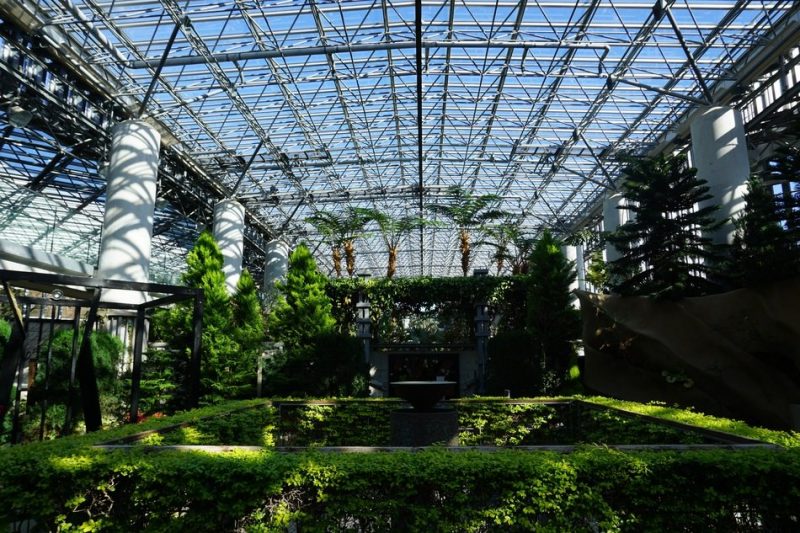Let’s talk all about greenhouse temperature difference; here is the answer to all your worries, for sure. Temperature differs between the inside and outside of your greenhouse. Many factors affect the temperature difference, such as climate.
Greenhouses lengthen the growing season of plants. It achieves this by mimicking the optimal temperature for plants all year round. Some crops, for example, tomatoes, prefer warmer temperatures. You can control the temperature of your greenhouse to suit this.

We’ll be explaining all about greenhouse temperature difference; how it works.
The Ideal Temperature
Do you want to know all about greenhouse temperature difference? Well, the general ideal temperature for the inside of your greenhouse is 27 – 29°C, any higher and you’ll be burning your plants. Of course, this still depends on the needs of your plants.
For example, melons prefer warmer temperatures. Meanwhile, radishes prefer cooler temperatures. You know you’ve maintained the right temperature based on your plant’s appearance.
Their growth is affected by temperature. If you see brown and bruised skin, that means you failed. Damaged plants have shorter growing seasons and decreased crop production.
Maintain ideal conditions, and you’ll have healthy plants throughout the year.
How It Works
If you want to understand all about greenhouse temperature difference, you have to know how it works. Greenhouses trap heat and make the temperature inside warmer. Sun exposure, climate, and ventilation directly affect the interior temperature.
Consider temperature difference during night and day time. The sun warms your plants. But, the night is cold with no natural heat source. You can use artificial heat sources to warm your greenhouse.
In that respect, the material of your greenhouse also affects the temperature. Plastic, in comparison to glass or polycarbonate, does not retain as much heat.
Summer
During the hot days, you need to regulate the temperature to make it cool. In this case, the inside will be more desirable than the already hot outside. Your plants will not be feeling too good.
What you’ll need are shade, ventilation, and some fans. Monitor the temperature by installing a thermometer.
Ventilation
Ventilation gives better air-flow. It can be a roof or side vents and even your greenhouse door. Ventilating releases the hot air that’s accumulating inside. In turn, it allows fresh air to pass through your plants. Of course, there are also automated vents available.
Fans
Fans are also a great companion to help you with this task. Add nets over the door to keep away pest, like your neighbor’s cat, out. Be sure the net can allow pollinators, such as bees and butterflies, to pass through.
Shading
Shading is the next defense in your arsenal. When the heat burns too hot, shade your plants. Shade paint is a quick and economical method to weaken the sun’s rays. You can paint more layers as throughout summer, then remove as it gets colder. However, they’re not suited for all greenhouses.
Blinds
Blinds are a double-edged sword. They can effectively shield your plants, but they can also block the vents. You can find ways to work around it or buy automated internal blinds. Don’t worry; blinds can be removable. You can remove them when the heat passes.
Damping
Your secret weapon though in cooling your plants, is damping. Do this by wetting the pathways and staging in your greenhouse. The more water that evaporates, the more moisture in the air there is. Doing this helps stave off the heat.
Damp down your greenhouse often, especially when it’s too hot. But if you can’t, at least once in the morning and evening should do.
Winter
In the winter, your main objective is to stay heated. Insulators and snow will be your two happy helpers.
The cold reduces daylight hours. Thus, leaving around 5-6 hours of sunlight. But proper insulation can retain a warmer temperature than outside air.
So long as the temperature is consistently above 0°F, you don’t have to use an artificial room heater.
Ironically, the snow covering your greenhouse can act as an insulator. Much like an igloo, the snow has air pockets that prevent heat loss.
Bubble wrap
Another insulator you can use is bubble wrap. Bubble wrap permits sunlight to pass through while also trapping warm air in its air bubbles. The trapped air disperses at night.
Frost cloth
Frost cloth allows water through while retaining heat. The soil absorbs the heat during the day and releases it at night. Frost cloth prevents the heat from escaping while also protecting the plants from cold.
Ventilation system
Keep humidity levels low at this time. Ventilation and fans will keep the air temperature consistent and prevent unwanted humidity.
It may not seem to make sense, but it does. If you don’t release the hot air occasionally, it will rise, and the cold air will gather below where your plants are. Cooler air carries less moisture, and so lowers the humidity levels.
So adjust your ventilation system to ventilate at least once per day or longer. Doing this gives your plants fresh and warm air. If all else fails, you can use artificial heat sources such as electric room heaters and heat lamps.
Conclusion
The temperature of your greenhouse has many factors affecting it. An example would be climate and sun exposure. But, you have many methods to control it as well.
During summer, shade, damping, and ventilation will save you. While in winter, insulation and ventilation are your happy helpers. The material of your greenhouse also comes into play. It’s all about consistent monitoring of your temperature and hard work.
Hopefully, through this article, you’ve understand all about greenhouse temperature difference.
